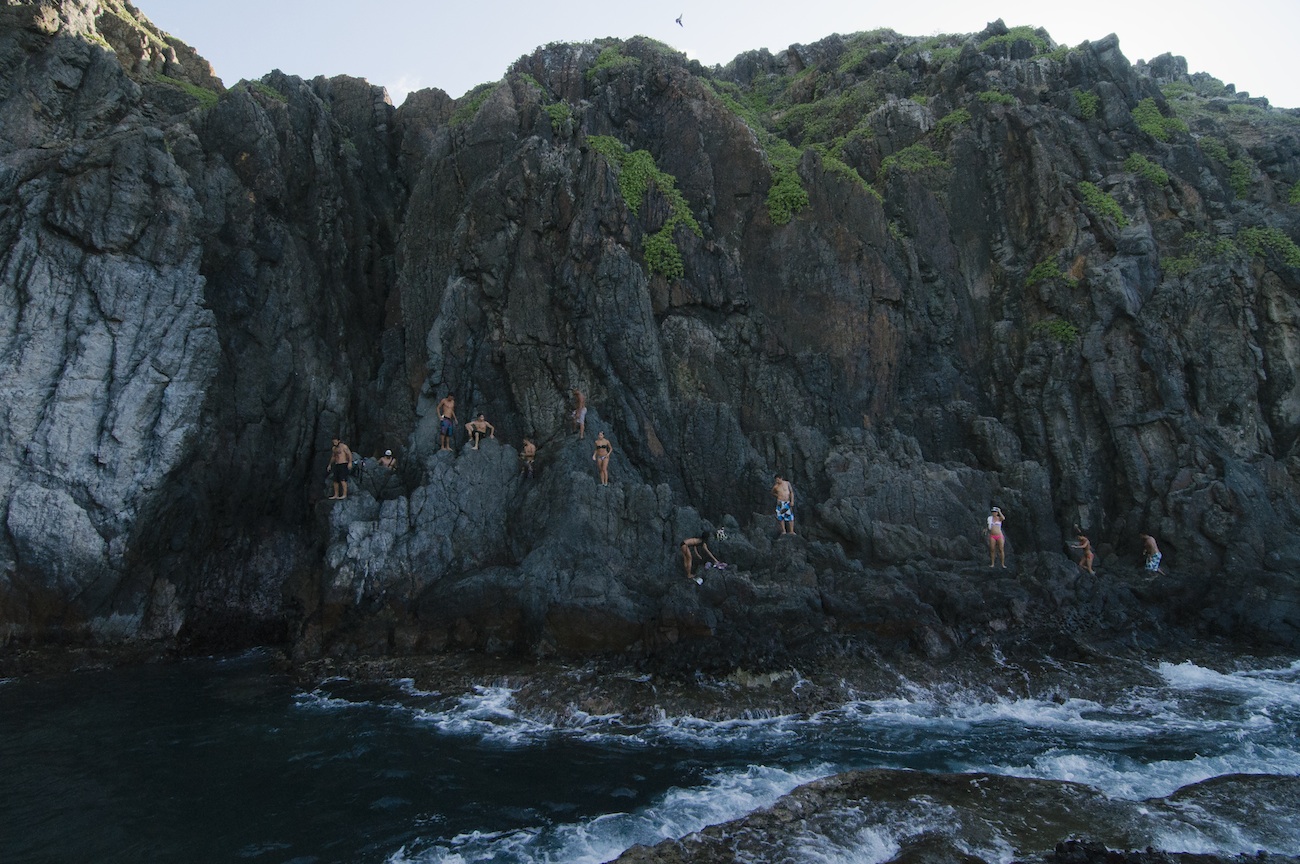Across the blue waters off the shores of O‘ahu are smaller islands and rock formations. Many are bird sanctuaries, and although some areas are restricted, others wait to be explored. Most are inhabited by wildlife and native plants, and offer short hikes to view spectacular views of O‘ahu’s mountains and coastline. So grab some sunscreen and pack the swim gear. Here’s a guide to the accessible islets—how to get there and what to do.
Text by Bianca Sewake | Images by David Chatsuthiphan and Anna Harmon
Kapapa Island
Kaneohe Bay, Kaneohe
Just beyond a sandbar in Kaneohe Bay sits one of the flatter islets, called Kapapa Island. In old Hawai‘i, the island was used as a fishing shrine and heiau. Signs of the heiau are still present today. It’s a popular site among fishermen who travel to the islet. Wander around the well-worn trails and spot a number of native plants and animals. Lush grassy areas make the perfect spot for an afternoon nap. Just be sure to not disturb the wildlife, since it’s still a bird sanctuary.
Tip: The yellow-orange ilima flower can be spotted around the islet.
Kukuihoolua Island
Laie Point, Laie
A rock bridge stands erected at an elevation of 20 feet, visible from Laie Point. The public is welcome to visit Kukuihoolua Island during the daytime. Those who make the journey are advised to kayak over when the sea is calm, as it is dangerous to cross when the sea is rough.
Tip: Some may swim over, but that can be dangerous.
Manana
Kaupo Beach, Makapuu
Anyone driving down the scenic road on O‘ahu’s south shore can look out across the deep blue water and see an islet. That would be Manana Island, also known as Rabbit Island. Although it’s not possible to step foot on the land since it is a protected bird sanctuary, people enjoy diving nearby. The waters have incredible visibility and divers can see marine life such as lobster, helmet shells, and interesting coral formations. Tiger sharks and reef sharks may also be found, and are extremely territorial.
Tip: Dive from a boat, rather than the islet’s small beach.
Mokoli‘i
Kualoa Regional Park, Kaneohe
Lying in the grass beneath the shade of swaying palm trees at Kualoa Regional Park may sound enticing, but the real attraction is the view of nearby Mokoli‘i Island—just several hundred yards off shore. Also referred to as Chinaman’s Hat by locals due to its cone shape, the area was once used in old Hawai‘i as training grounds for high chiefs. Today, anyone can access the island with a kayak, surfboard, or small boat. After stepping foot on Mokoli‘i, take a walk around or hike up to the peak. Though the ascent passes through thick brush and dirt, the payoff will be a stunning view of O‘ahu’s green Ko‘olau Mountains and windward coast.
Tip: Although possible to walk over during low tide, it is advisable to have a tide chart to know when to head back.
Mokulua
Lanikai Beach, Kailua
From the picture-perfect white sandy Lanikai Beach, the Mokulua twin islands—or what many call The Mokes—set the backdrop of many photographs. Both islets are bird sanctuaries. The larger islet called Moku Nui, on the left, is open to those who wish to kayak or canoe over during the daytime. The smaller islet on the right, called Moku Iki, remains off limits. Snorkel along Moku Nui’s shore and explore the underwater life. For those seeking adventure on land, climb up the rocky trail on the south end of the island.
Tip: The waters around Moku Nui have turtles, spinner dolphins (occasionally), and humpback whales (during winter).
Mokuauia
Malaekahana State Recreation Area | Laie
There are no goats here, although it is nicknamed Goat Island. From the Malaekahana State Recreation Area, the islet can be reached by wading through the calm blue waters. On other days, it is not uncommon to find people bodyboarding or paddling out the short distance of a couple hundred feet. Mokuauia is flat land with shallow waters near its shore for swimming and rocky tide pools for observing smaller sea life. At the center of the islet is a restricted area for birds nesting their babies.
Tip: Ask the lifeguard if the tide is low enough to walk over to the islet.
Popoia
Kailua Beach Park | Kailua
With so many water activities available at Kailua Beach Park, try something different by paddling out on surfboard to what is usually called Flat Island. In old Hawai‘i, this islet was used as a place where fishermen would offer up fish meat in order to have good luck in fishing. That’s how it got its name, which translates to ‘rotten fish.’ On a nice day when the water isn’t rough,
Popoia is a good spot for beginner surfers, with nice shore breaks.
Tip: Also good for swimming, snorkeling, or taking in the view of Lanikai Beach.



